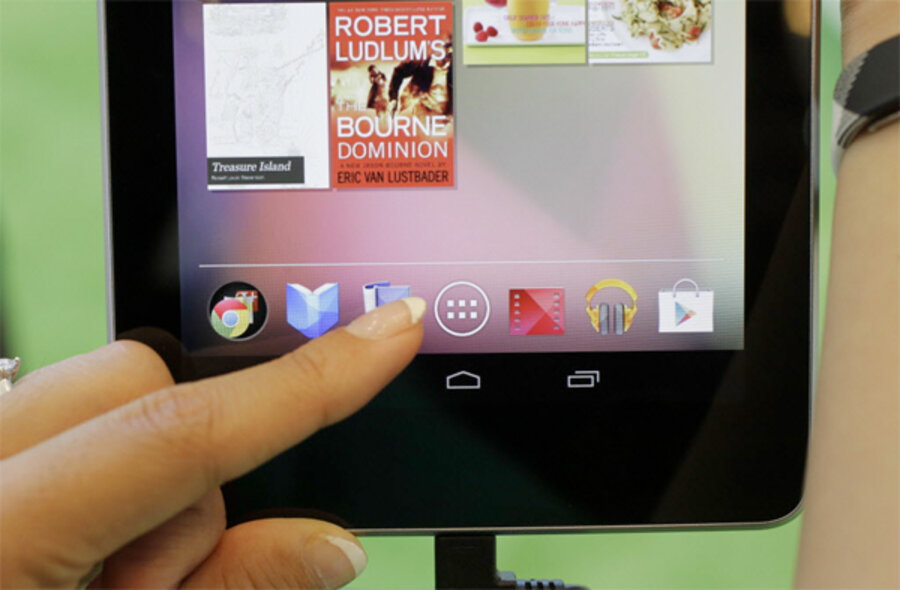Google's Nexus 7 tablet: better than Kindle Fire?
With the dramatic unveiling of its Nexus 7 tablet (we hear skydiving was involved), Google has both dived headlong into consumer electronics and shaken up the Apple-Amazon tablet wars.
Google announced the release of its first tablet, the $199 Nexus 7, at its San Francisco developers conference Wednesday. More than just another tablet to enter the hot new market, the Nexus 7 illustrates Google’s determination to reinvent itself as a “lifestyle and culture purveyor” manufacturing its own hardware to compete with the likes of Apple and Amazon. It’s a new direction for the company, and one that heats up the tablet wars in a big way.
The good news for bibliophiles? Unlike Microsoft’s promising new Surface tablet, the Nexus 7 is compact, relatively affordable, and designed for e-reading. (Google’s director of product management Hugo Barra actually compared the Nexus 7’s form to a paperback book, touting the device’s compact, easy-to-hold shape.)
"We want things to be simple, beautiful and really smart," said Mr. Barra at Wednesday’s unveiling.
The 7-inch tablet, made in collaboration with Taiwan-based manufacturer Asus, has a Tegra 3 quad-core processor and a 12-core processing unit, allowing users to run games, movies, apps, e-books, and other content smoothly. It’s got 8 GB of memory (bump up to $249 for 16 GB) and runs on the Jelly Bean operating system, plus comes with a bevy of goodies including a front-facing camera, microphone, GPS, accelerometer for testing Internet speed, plus several ports (mini HDMI, Micro USB, Ethernet). What’s more, it’s got a sharp reading medium, in-plane switching technology to increase the screen’s viewing angles and higher-resolution screen than the Kindle: 1,280 x 800 pixels versus the Kindle’s 1,024 x 600 pixels. “Great if you want to share something with your friend; bad if you want to hide the fact that you’re reading ‘Fifty Shades of Gray’ or indulging in some guilty pleasure like ‘Real Housewives of Orange County,’ since you can now purchase TV shows on Google Play,” writes allthingsd.com blogger Bonnie Cha.
What’s more, almost all of Google’s products are integrated into the Nexus 7, including Google Chrome, Google Maps, Google Translate, and of course, Google Play, which the company will use to sell the tablet and deliver content to users.
So how does the Nexus 7 stack up against the Kindle Fire, its most obvious competitor? Early reviews are promising.
Writes the Philadelphia Inquirer’s Jonathan Takiff, “The 7-inch screened Nexus 7 tablet has instantly been judged a better deal at $199 (in 8GB form) than the similarly-sized but now relatively old tech Kindle Fire.”
“Google’s Nexus 7 tablet feels like the device that might just usurp the Kindle,” writes the UK’s Telegraph. “It does everything that Amazon’s device has done so successfully since it launched in 2007, but with Google you can now also watch videos, browse beautifully rendered magazines and the web and of course check your email. A Kindle costs from just [$79], but those extra functions are likely to persuade a huge number of people to part with [$199].”
The $199 Nexus 7 is available for sale on Google’s app store Google Play and will start shipping in mid-July. Every order comes with a $25 credit to spend in Google Play on movies, magazines, and more.
Husna Haq is a Monitor correspondent.






